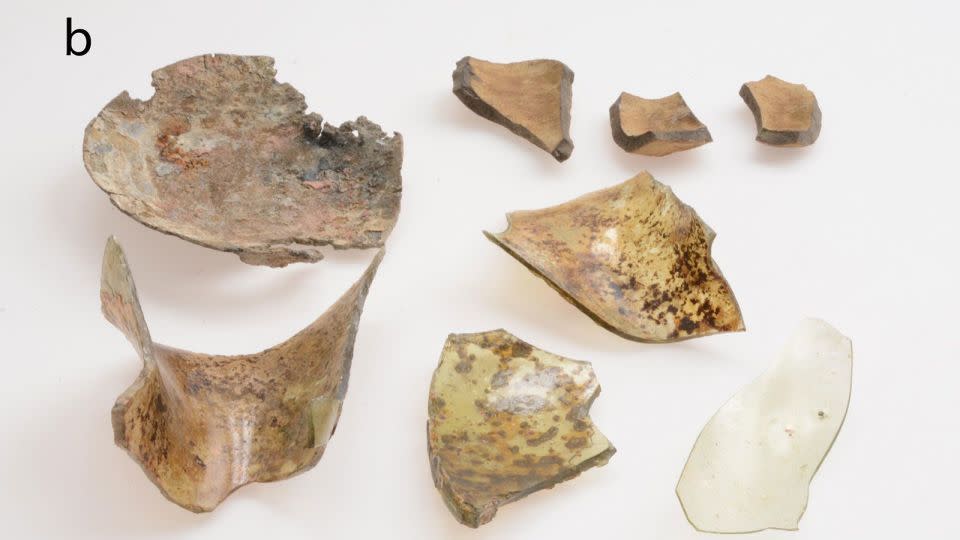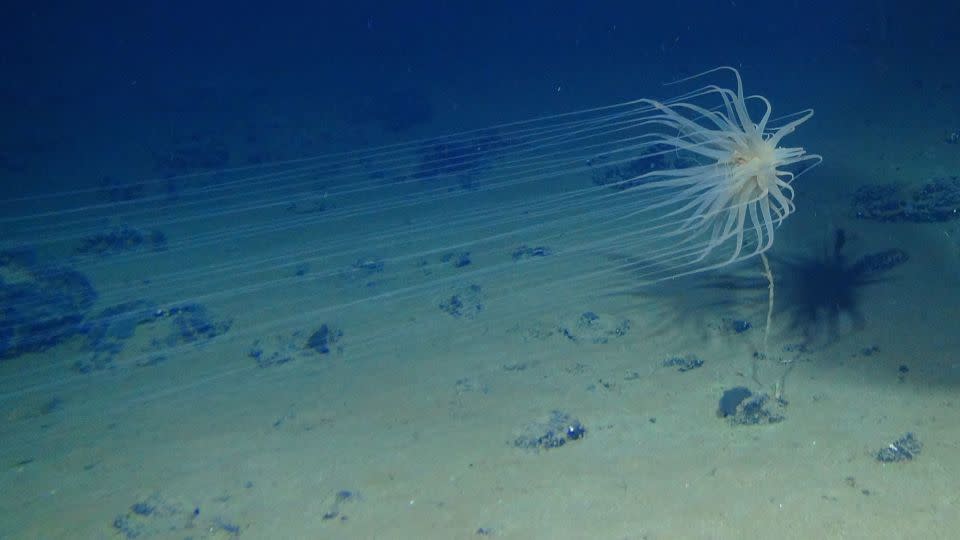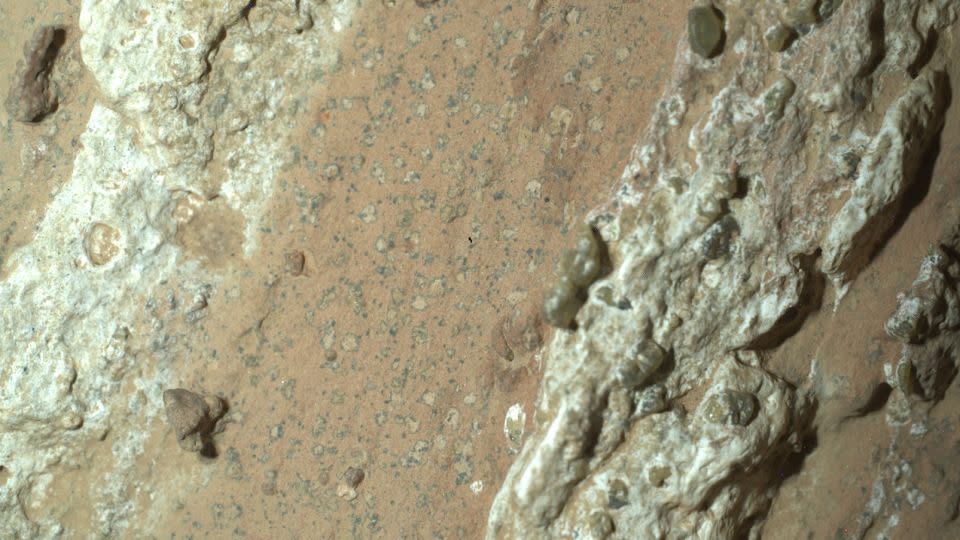Editor’s Note: A version of this story appeared in CNN’s Wonder Theory science newsletter. To get it in your inbox, Sign up for free here.
Experimentation is the foundation of the scientific process. It is at the heart of what it means to be human and to question the world around us.
Thousands of years ago, our ancestors made the first maps of the stars and practiced alchemy, the precursor to chemistry.
Even Sir Isaac Newton, considered the father of physics, was an avid alchemist who wrote a recipe for a key ingredient needed to create the legendary philosopher’s stone. The stone was thought to be able to turn any metal into silver or gold.
Chemists in the 18th century tried to dismiss alchemy as a pseudoscience. However, ancient alchemists actually developed technology and discovered chemical elements that are still widely used today.
Now a new discovery has been made that links astronomy and alchemy in an intriguing figure who lived during the Renaissance.
Dig this up

In the 16th century, Danish astronomer Tycho Brahe changed the way people understood the heavens by discovering a supernova and suggesting that the moon revolved around the Earth. All this happened before telescopes existed.
But in the basement of his castle, Uraniborg, which included an observatory, the astronomer performed arcane alchemical work for elite royal clients. Little is known about Brahe’s work, aside from his dedication to developing medicinal recipes rather than gold.
New analysis of glass shards from the ruined alchemy lab has revealed that Brahe used ingredients including tungsten in his mysterious concoctions, which were not officially described until more than 180 years after his death.
Defying gravity
NASA astronauts Butch Wilmore and Suni Williams have spent more than 50 days aboard the International Space Station after leading the first crewed mission of Boeing’s Starliner spacecraft. And there’s still no set date for the astronauts’ return to Earth.
But NASA and Boeing are now focusing on the “root cause” of the problems the spacecraft encountered during its journey, including helium leaks and problems with the booster rocket.
Engineers have spent weeks conducting ground tests to reproduce the anomalies. Additional testing this weekend should reveal the problems fully, said Mark Nappi, manager of Boeing’s Commercial Crew Program.
Meanwhile, SpaceX has received approval to resume launches with its Falcon 9 rocket, which recently suffered a mission-ending failure during a routine voyage. Once the Starliner mission concludes, SpaceX will ferry a quartet of astronauts to the space station for NASA’s Crew-9 mission.
Once upon a time on a planet


Marine scientists have discovered an unusual type of oxygen produced without photosynthesis on the seafloor, more than 4,000 meters below the surface. This type of oxygen could help unravel the origins of life.
When Andrew Sweetman, a professor at the Scottish Association for Marine Science, first spotted the unexpected phenomenon in the Pacific Ocean a decade ago, he thought the sensor equipment was faulty. No light can reach the ocean depths and there is no known oxygen produced by organisms on the seabed.
But new research from Sweetman and his team now suggests that the ‘dark’ oxygen may be created by potato-sized metallic nodules that act as ‘geobatteries’ within the deep-sea ecosystem.
Secrets of the Ocean
A camera attached to an endangered shark captured the shocking moment a boat attacked the marine animal, perhaps the first time footage has been released to show just how common boat strikes are to marine life.
Researchers don’t know if the 23-foot basking shark, which lives in the waters around the Blasket Islands off the coast of Ireland, survived the collision. But the impact clearly left a large scratch and streaks of paint on the shark’s mottled skin.
Scientists are working to better understand the species, which is among the largest fish in the world. The footage should shed more light on the feeding habits of the basking shark as it feeds with its jaws open at the ocean’s surface.
Instead, the video highlights why the basking shark and other endangered marine life need protection.
In addition, cocaine has been found in sharks living off the coast of Brazil, the first time the drug has been found in free-ranging sharks.
Other worlds


The Perseverance rover has discovered something that could indicate that microbial life may have existed on Mars in the distant past.
The robotic explorer has been investigating a rock nicknamed Cheyava Falls. The rover used its instruments to analyze the leopard-spotted rock, finding chemical signatures and structures that may have been formed by life billions of years ago when water was present on the Red Planet.
“These spots are a big surprise,” said David Flannery, an astrobiologist on the Perseverance science team. “On Earth, these kinds of features in rocks are often associated with the fossilized record of microbes living in the subsurface.”
Curiosities
These new discoveries may surprise you:
— Komodo dragons, the largest lizards in the world, have iron-tipped teeth that turn the serrated edges orange and help the deadly predators tear apart their prey, new research shows.
— The Chandra X-ray Observatory recently celebrated a quarter century in space by releasing 25 never-before-seen, glowing images of the cosmos — but NASA budget cuts could bring the mission to a premature end.
— Humans aren’t the only ones who can blush. Domestic chickens have been observed blushing to express fear or excitement, and researchers working on a French farm have images of the pink-tinged chickens to prove it.
Do you like what you’ve read? Oh, but there’s more. Register here to receive the next edition of Wonder Theory in your inbox, brought to you by CNN Space and Science writers Ashley Strickland And Katie HuntThey find wonder in planets beyond our solar system and discoveries from ancient times.
For more CNN news and newsletters, create an account at CNN.com